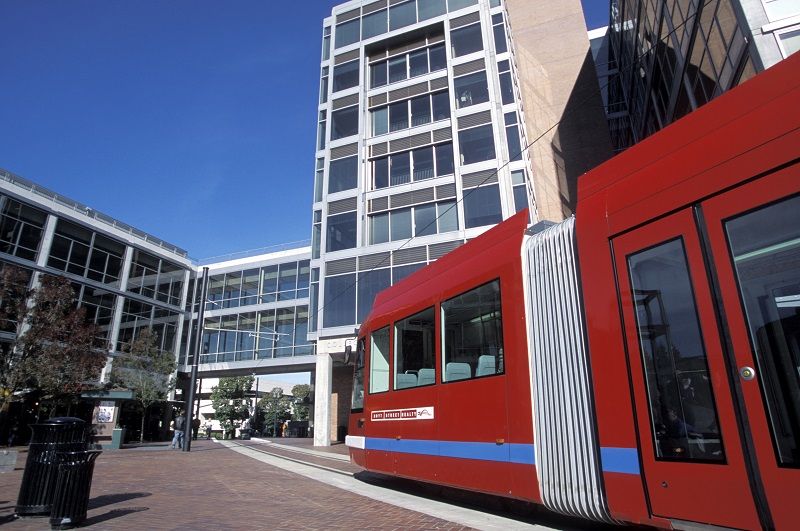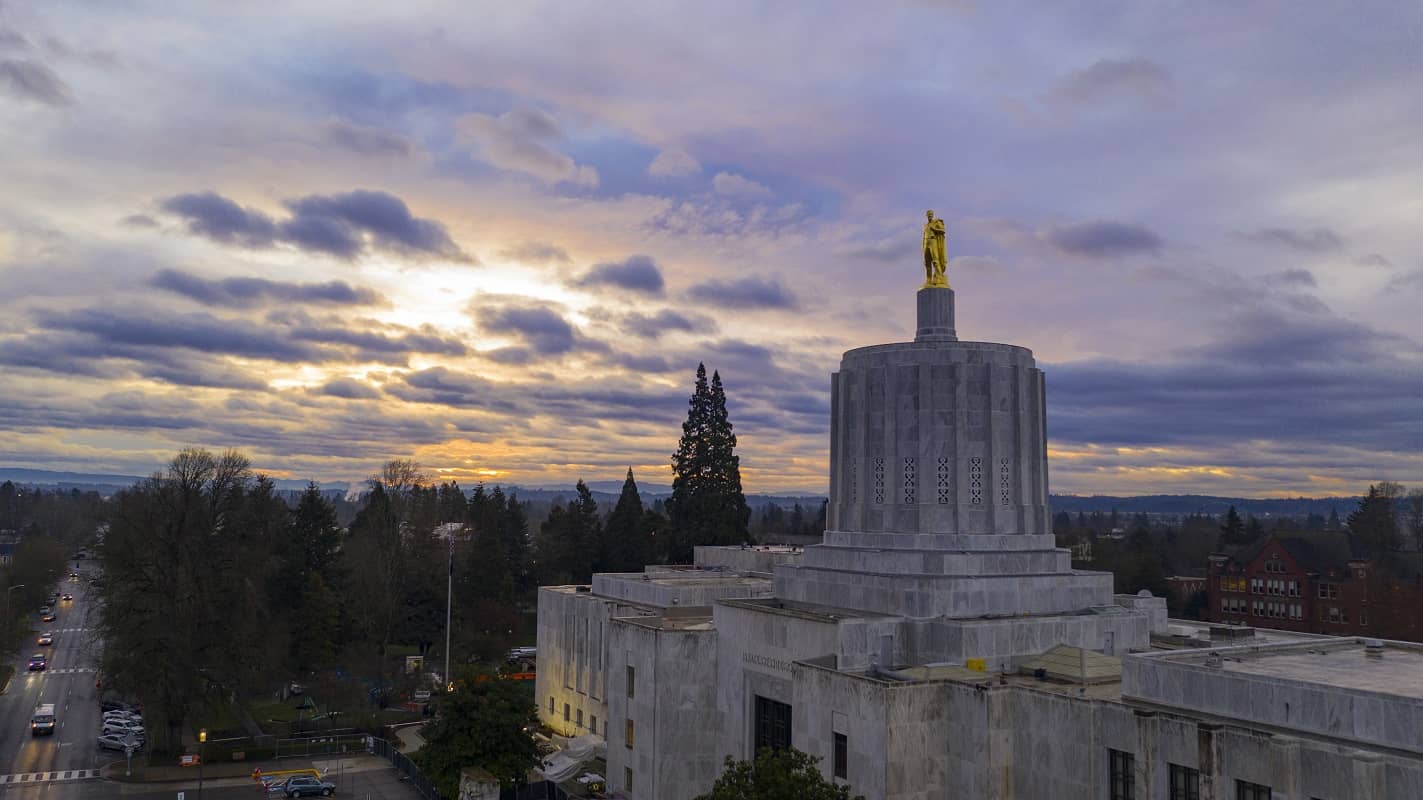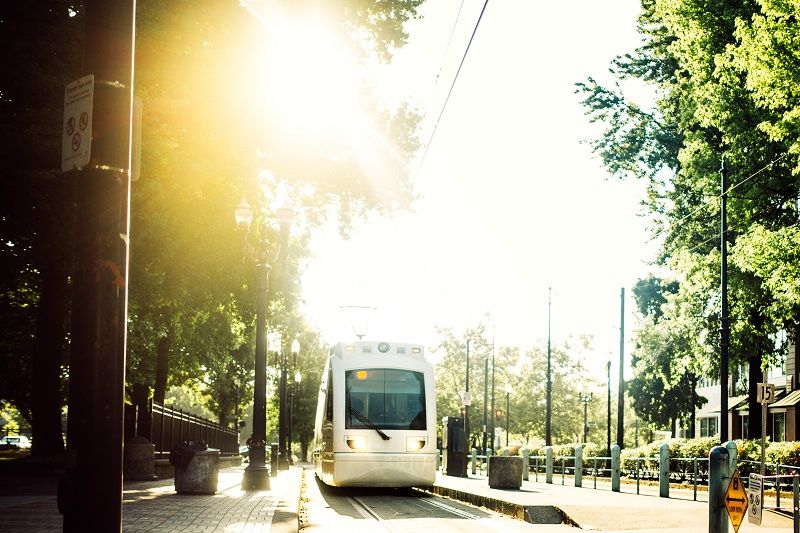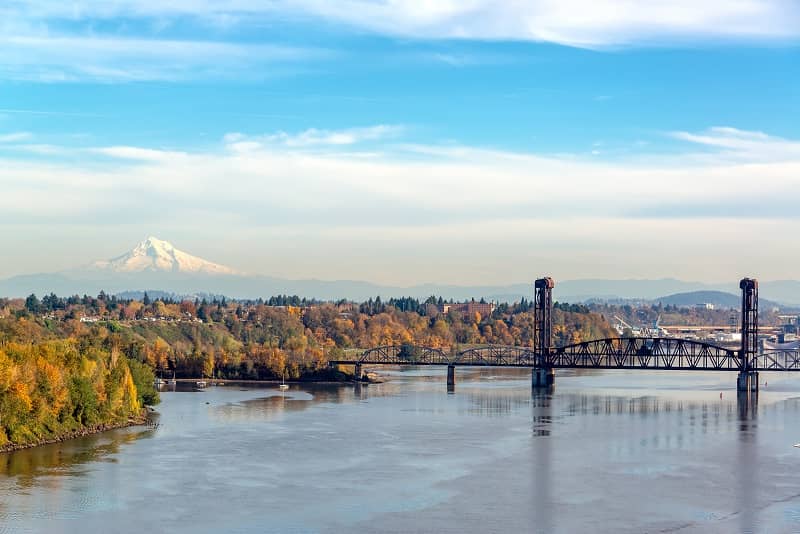Cascade Report: Think Twice Why Wind Power Mandates Are Wrong for the Northwest
by Todd Wynn and Eric Lowe
New report by Todd Wynn and Eric Lowe highlights the problem with the legislature picking winners and losers in the energy market.
Watch an Interview with Todd Wynn about the perils of forcing wind energy on the grid.
Click through for full report
Think Twice: Why Wind Power Mandates Are Wrong for the Northwest
By Todd Wynn and Eric Lowe
Renewable energy on the Pacific Northwest’s electricity grid has increased substantially over the years, and this is leading to a number of problems. For the Pacific Northwest, renewable energy expansion truly means wind energy expansion because it is the closest to being market-competitive of all renewable energy sources. Wind power, like hydroelectric power, is clean (i.e., carbon-free in its production), and this remains a large part of policymakers’ attraction to wind. Unfortunately, the negative aspects of wind power are apparent, yet often overlooked. Ever-increasing wind generation will have a significant impact on the reliability and affordability of electricity in the Pacific Northwest that very well might outweigh any of the claimed environmental benefits.
The Bonneville Power Administration (BPA), the Pacific Northwest’s federal power marketing authority, is charged with integrating the large influx of wind power into the electricity grid. In 1998, BPA’s wind generation was roughly 25 megawatts (MW). Today, it totals 2,780 MW. With the 20071 Oregon Renewable Portfolio Standards (RPS), which forces utilities to provide a certain percentage of politically preferred renewable energy2, over 6,000 MW of wind power is expected to be on-line by 20133. In the last few years, BPA has integrated over 19 wind farms (comprising well over 1,000 individual turbines) alongside 5 new substations and 6 tap-lines to connect these new sources of power generation with the rest of the electricity grid4. Currently, BPA has one of the highest ratios of wind power to overall load of any federal power marketing authority in the United States. By the end of 2010, the percentage of wind power in overall energy generation will be approaching an amazingly high 30%. This high proportion of wind power might seem to be a successful outcome of renewable energy mandates, but it is necessary to understand that mandating increased wind generation has negative economic consequences for Pacific Northwest ratepayers while at the same time potentially negating any environmental benefits.
Integration Problem
Obviously, wind is unpredictable and inconsistent, creating a significant problem for BPA and electric utilities. The electricity grid must remain in perfect supply-and-demand equilibrium in order to guarantee that when a ratepayer flips a switch, a light turns on. To prevent brownouts or overloads on the grid, BPA must schedule energy production in advance. However, the ability to predict when and how hard the wind will blow is extremely limited (usually a two- or three-day window) and often inaccurate. These problems are exacerbated by the fact that BPA has to have a backup system, known as a balancing reserve capacity, equal to or greater than the wind power capacity utilized at any given time. Because wind power is so unpredictable, every MW of wind power must be backed up by an equal amount of reliable energy in reserve to replace the energy lost when the wind dies down. Otherwise, the grid becomes unreliable and service is interrupted. In Oregon and the rest of the Pacific Northwest, hydroelectric dams currently serve as the balancing reserve. This means hydroelectric dams are turned on and off in order to respond to fluctuations in wind generation.
The integration of wind power and the capacity of the balancing reserve will become a more significant problem in the near future. As total wind power capacity edges closer to 6,000 megawatts, the current balancing reserve will have greatly exceeded its limit. According to BPA, the current capacity of hydroelectricity to serve as a balancing reserve is 3,000-3,500 MW of installed wind generation5. This means dams can “back-up” only roughly half of the proposed total capacity of wind generation. Thus, in the future BPA will be forced to look at other options to establish a satisfactory balancing reserve. This is especially true because of increased energy demand associated with a steadily increasing population. The argument that wind power can help to meet future energy demand is erroneous, since wind energy does not add capacity to the grid. Wind power merely trades off with existing sources of production, which functionally means shutting down hydroelectric dams and building additional back-up generation facilities (essentially building two power plants for the energy of one).
Some efforts to rectify the integration problem include a study to evaluate the feasibility of dynamic scheduling, which means breaking down the periods of time wind generation is scheduled (e.g., from hour-to-hour to 30-minute increments). Additionally, BPA is analyzing better ways to forecast wind speed and is researching storage technologies (such as compressed air or flywheel technology). Such advances are generally far off, or would fail to address the problem completely. Therefore, BPA eventually will be forced either to buy additional dispatchable generation capacity from third-party suppliers or to build additional back-up capacity. This leads to additional costs for BPA, the utilities which purchase power from BPA, and ultimately Oregon ratepayers.
If additional power is needed, BPA must purchase energy from regional utilities over market hubs. Currently, market transactions over the Western Interconnection occur once an hour, leaving grid operators to fend for themselves when it comes to changes in overall load within each hour67. While sub-hourly market transactions and improved wind forecasting could help to reduce the cost and difficulty of integrating wind power, other problems still need to be addressed.
The sources of additional backup energy are a critical issue. According to Portland General Electric, the largest investor-owned utility in Oregon, its 2009 resource mix was comprised of 24% coal, 27% natural gas, 26% hydroelectric, 19% purchased on the open market and 4% wind power8. The amount of energy derived from hydroelectricity is likely to decline as statewide efforts to close down various dams move forward and negative public sentiment towards building new dams continues. To compensate, utilities and BPA will be forced to build an increasing number of natural gas plants. After hydroelectricity, natural gas plants often serve as the backup reserve for wind power, mainly because they can be ramped up or ramped down fairly easily to meet supply fluctuations. This is already occurring, as PGE has begun the permitting process for a natural-gas fired plant in Boardman, Oregon; and plans for a second natural gas plant in 2015 are underway9. These plants will become even more necessary as the ability to use hydroelectric dams as backup is strained and wind generation capacity keeps expanding due to legislative mandates.
PGE understands that renewable energy increases costs for ratepayers. PGE has stated that their plan to build more wind farms is likely to add more than half a billion dollars to its capital expense tab by 2015. These costs would be passed down directly to ratepayers and could necessitate the construction of even more natural-gas facilities to back up additional wind power sources.
Further, natural gas facilities produce greenhouse gas emissions, which at least partly negate the purpose of the renewable portfolio standards. When asked if wind power was reducing carbon emissions, Deb Malin, a BPA representative, answered, “No. They are, in fact, creating emissions.”10 The reason is that natural gas power plants used to back up wind farms must be kept on-line at all times. Because of the difficulty in shutting down and starting up fossil fuel power plants, these plants must be kept running so when wind power dies down, the electricity can be replaced quickly by a reliable energy source. This is known as “spinning reserve,” a process that resembles the operation of an automobile idling. While a natural gas facility may not be generating any actual electricity while in spinning reserve, it is consuming fuel and emitting greenhouse gases11. In addition, a spinning reserve (such as an open-cycle gas-fired power plant that has to be idled up and down) witnesses a dramatic decrease in efficiency. While specific figures are difficult to determine, a decrease in natural gas plant efficiency to 45% or below will offset all emissions savings in the production of power from wind sources. Such a facility, reacting to the changing output of wind power, can see its efficiency drop to between 35-50 percent12. This means that throttling the power of a natural gas facility up and down in response to wind generation has a significant effect on the plant’s efficiency. Thus, many of the environmental claims of wind power with regard to greenhouse gas emissions may be negated due to the need for backup reserves to compensate for the intermittency of wind.
Integration Costs
How much will reliability and integration problems associated with wind power cost Pacific Northwest ratepayers? The answer may surprise the average ratepayer.
In 2009, BPA requested that the Oregon Public Utility Commission (OPUC) allow an electricity rate increase to reflect the costs of integrating wind. BPA proposed an increase of $2.79 per kilowatt-month, and the OPUC set the final rate increase at $1.2913. According to BPA, the associated costs of the $1.29 rate increase broke down as follows: $0.05 for regulatory expenses, $0.26 for load following (e.g., wind forecasting) and $0.98 to correct imbalances (e.g., balancing reserves such as natural gas or hydro). The previous rate of $0.68 per KwM, according to BPA representative Sarah Bermejo, did not reflect the costs associated with imbalances in wind production. She noted that BPA is forced to purchase additional power from outside utilities to cover shortfalls14. The new rate represents a doubling of wind integration costs, and this rate will continue to increase as more wind energy is added to the grid. These additional costs are eventually passed on to Oregon ratepayers.
In addition, President and CEO of Portland General Electric (PGE) Jim Piro sent an e-mail to ratepayers on February 16, 2010 explaining the utility’s plans to request a rate increase which would have to be approved by the Oregon Public Utilities Commission. The rate increase proposed for 2011-2013 will raise the average household electricity bill $6.70 per month. According to Piro, these costs can be associated largely with state renewable energy mandates, such as finishing phase III of the Biglow Canyon Wind Farm15.
In fact, PGE ratepayers already see increased costs on their monthly bill. A “Renewable Resource Adjustment” was added to ratepayers’ bills in January 2010. Ratepayers can find such adjustments on the back of their monthly bill. According to a PGE representative, this charge is due to legislative mandates to develop and implement more renewable resources. They plan to update this charge every year by April 1 to respond to projected changes for the year, and it does not seem likely that this adjustment will be going away anytime soon. Despite the existence of a voluntary program to pay for the above-market costs of renewable energy, PGE now charges its customers a higher rate for the added renewable energy on the grid by charging 0.22 cents per kWh, or approximately $2.13 extra per month, for an average household. 16 17 18 19
Likewise, Pacific Power customers most likely will see a significant increase in their electricity rates, starting January 201120. The second-largest investor-owned utility in Oregon filed a 20% rate increase with the OPUC. 13% of the rate increase is designed to cover costs associated with two new transmission lines and finalized construction of two new wind farms in Wyoming. 7% of the increase is to cover “the expiration of long-term contracts for low-priced hydropower, the expiration of a fixed-price gas contract, and costs associated with integrating intermittent wind power”21. So not only will consumers have to pay more money to build additional wind farms (mandated by RPS) but also to integrate the intermittent production of these wind power facilities. According to the article, a monthly bill of $80.96 in 2011 will increase to $96.78. This increase is “a whopper,” said Bob Jenks, executive director of Citizens Utility Board of Oregon, a ratepayer advocacy group. “In the economy we’re in today, where many of their [Pacific Power’s] customers are struggling to pay their bills, this is going to be really difficult for folks.”
Furthermore, the construction of new natural gas facilities to serve as a backup for additional wind sources affects rates. Natural gas is subject to price volatility, similar to buying gasoline at the pump. Uncertainty in production and delivery lead to significant fluctuations in natural gas costs and ultimately in electricity rates. Thus, not only are electricity rates increasing because of additional wind generation, but the subsequent entrenchment of natural gas reliance further exacerbates the problem by introducing volatility.
Voluntary Choice Versus Mandates
As mentioned above, one of the main reasons why wind energy has expanded so quickly in Oregon is because the Oregon Legislature passed renewable energy mandates in 2007. These mandates force utilities, and ultimately ratepayers, to purchase a certain percentage of renewable power by a certain year. The main goal is to have 25% new renewable energy on the grid by 2025. This effectively creates artificial demand, and wind power developers must build wind farms to meet this demand. Additionally, subsidies for production, as well as lucrative state tax-incentives, create multiple levels of artificial support for wind power.
Interestingly enough, Oregon already has a 100% voluntary system to allow ratepayers to purchase renewable energy if they wish to do so. Green power programs available through all the major utilities give ratepayers the option of paying the above-market costs associated with renewable energy. PGE boasted the highest participation rates in the nation during the past few years at a rate of approximately 9%.
Renewable energy does cost more than traditional energy sources, and a green power program is the voluntary way to increase renewable energy for those who can afford and value wind farms. Ideally, the supply of renewable energy should equal the amount that can be afforded by green power program payments. But mandates forcing all ratepayers to buy renewable energy creates artificial demand, causing a surge in wind farms popping up across Oregon and an increase in electricity costs.
Forcing Oregonians to purchase an energy source with so many associated costs is unwise. At best, wind power simply replaces a clean, reliable and affordable source of energy: hydroelectricity. At worst, it invites increased price volatility, increased rates and the prospect of more greenhouse gas-emitting facilities. Ultimately, mandating increased wind generation leads to financial burdens on businesses and individuals across the state that ought to be considered carefully. Legislators should not attempt to choose “winners” in emerging energy technologies, nor should they force costly energy sources upon ratepayers. Instead, utilities should allow ratepayers to pay the full cost of renewable energy voluntarily and to expand renewable energy according to consumer demand22.
*Footnote information can be viewed in the .pdf of the report.
About the Authors:
Todd Wynn received his bachelor’s degree in Business Economics from California State University Long Beach and his master’s in International and Developmental Economics from University of San Francisco.
Eric Lowe is a research associate for the Cascade Policy Institute. He recently graduated from Willamette University and will attend the University of Maryland School of Public Policy in fall 2010 to earn his master’s degree in public policy analysis.
They wish to thank Cascade Academic Advisor Michael Barton, Ph.D. and President John A. Charles, Jr. for their review.











